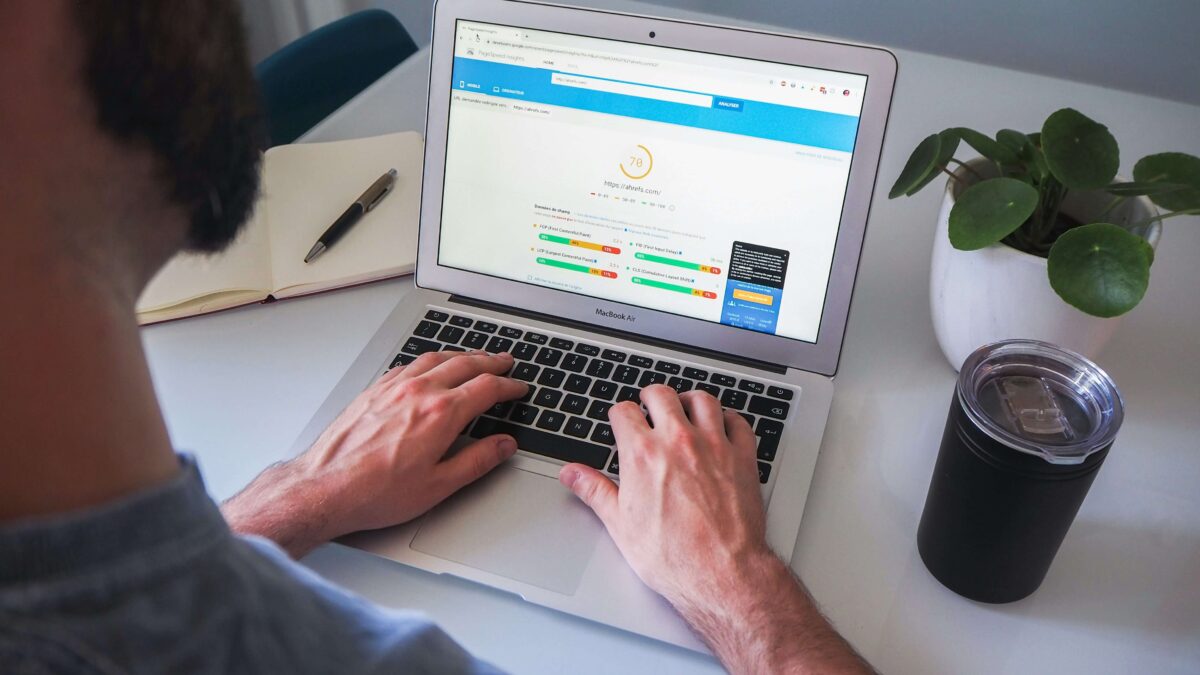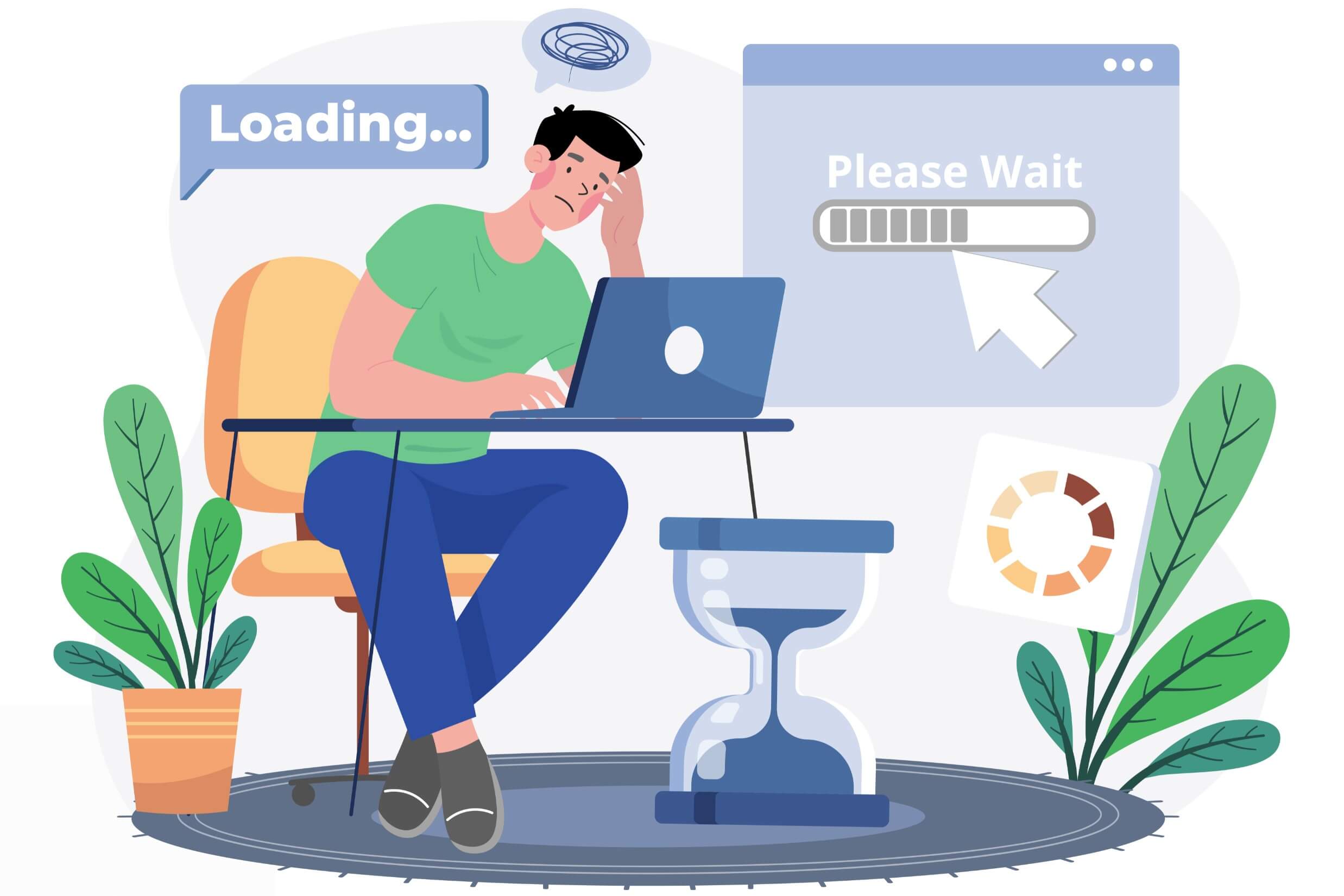
What Makes a Logo Truly Effective? Design Tips for Businesses
August 15, 2025
Design That Speaks: How Graphic Design Shapes Your Brand’s Story
August 18, 2025The Role of Website Speed in SEO Rankings
When it comes to competing for visibility on search engines, website speed in SEO rankings plays a more critical role than many site owners realize. A page that loads within seconds not only provides a smoother browsing experience but also sends strong performance signals to search engines. On the other hand, a slow-loading site can frustrate visitors, increase bounce rates, and ultimately harm your position on search results even if your content is high-quality.
Search engines like Google have made it clear: user experience is at the heart of their ranking systems, and website speed is a measurable part of that experience. With Core Web Vitals now integrated into ranking algorithms, the time it takes for a page to become interactive can make the difference between appearing on the first page or being buried in later results. Faster websites are rewarded not just with better rankings, but also with higher engagement and conversion rates.
This article examines why website speed matters for SEO, the ways in which load time influences ranking factors, and the actionable steps you can take to optimize your site for better performance. The thesis is straightforward: improving your website speed is an essential strategy for maintaining and enhancing your SEO rankings in a competitive online landscape. By understanding and addressing this factor, you position your website for greater visibility, stronger user satisfaction, and sustainable growth.
New to SEO? Start by learning the basics in our simple guide for beginners.
Understanding Website Speed
Website speed refers to how fast your pages load. It includes metrics like Time to First Byte (TTFB), First Contentful Paint (FCP), and Largest Contentful Paint (LCP). These metrics reveal how quickly a user sees and interacts with content. For example, the recommended LCP by Google is under 2.5 seconds. Sites that exceed this often lose user attention fast.
Several tools help you test speed. Google PageSpeed Insights scores sites on performance. GTmetrix gives a detailed breakdown. Pingdom shows load times and where delays occur. Even free tools can give actionable tips. They highlight issues like uncompressed images, render-blocking scripts, or slow server response times.
Slow speed harms user experience. Research shows that a delay of just one second can reduce conversions by up to 7%. Moreover, 53% of mobile visitors abandon a site that takes longer than three seconds to load. These figures show how fragile user attention is. They also underscore why measuring key speed metrics matters. By understanding these core indicators, you can focus your optimization efforts wisely.
Why Website Speed Matters for SEO Rankings
Website speed affects SEO rankings in several ways. First, Google uses Core Web Vitals as ranking signals. LCP, First Input Delay (FID), and Cumulative Layout Shift (CLS) all matter. Sites with poor scores may rank lower even if content quality is high. Conversely, fast-loading sites often enjoy better visibility. This makes speed a vital piece of SEO strategy.
Second, speed affects user engagement, another indirect ranking factor. If pages load quickly, visitors stay longer. That improves dwell time. It also reduces bounce rate. Search engines interpret this behavior as a sign of quality. As a result, fast sites get rewarded.
Third, faster sites help with crawl efficiency. Googlebot can retrieve more pages during a crawl if response times are quick. This increases the chances of deeper indexing. As a result, your site’s fresh content appears sooner in search results.
In fact, a study of mobile pages found that improving load time by 0.1 seconds led to an 8% increase in organic search traffic. That’s a powerful gain for a small optimization. In short, website speed matters not only for direct ranking signals, but also for user satisfaction and site indexing, making it a multiplier of SEO benefit.
How Website Speed Affects Other Ranking Signals
Website speed links closely to other ranking signals. First, there’s bounce rate and dwell time. Slow pages often push users away. As mentioned, over half of mobile users quit sites taking longer than three seconds. When bounce rates rise, search engines may see your content as less relevant.
Next, speed impacts crawl efficiency. Google allocates a crawl budget per site. If pages load slowly, fewer get crawled within that budget. That delays indexing of new or updated content. Faster sites allow deeper, more frequent crawls. This leads to faster ranking updates and better content coverage.
Moreover, speed strongly intersects with mobile-first indexing. Google predominantly uses the mobile version of a site for ranking and indexing. If your mobile pages are slow, your desktop site might not compensate. Nearly 60% of all web traffic comes from mobile devices. That makes mobile site speed a top priority.
Finally, improved speed improves user trust and perceived reliability. Fast, seamless loading feels professional. It builds confidence. That, in turn, can lead to more return visits and stronger brand signals. Those attributes indirectly feed into SEO via behavioral metrics and user loyalty. In essence, optimizing page speed can boost multiple, interconnected ranking factors simultaneously.
Common Causes of Slow Website Speed
Several issues commonly slow down websites. First, unoptimized images often take up excessive bandwidth. Large JPEG or PNG files without compression or wrong dimensions result in long load times.
Second, excessive HTTP requests and bulky code also drag speed. Sites that load many CSS and JS files, or serve HTML, CSS, and scripts in one bulky package, slow the user experience. Also, inline styles and unused CSS can be problematic.
Third, poor web hosting may limit server response times. Shared hosting on overloaded servers can result in TTFB of 1 second or more. That’s too slow. Upgrading to faster hosting or a reliable VPS can cut response times dramatically.
Fourth, unnecessary plugins or scripts, especially in CMS platforms like WordPress, can bloat pages. Every extra plugin adds weight, slows rendering, and increases potential conflicts.
Fifth, heavy use of third-party scripts, for ads, analytics, or widgets, adds external delays. Each external call must wait for a response. If that slows down, your site slows down.
Identifying these issues is key. Tools like GTmetrix and PageSpeed Insights will call out uncompressed images, unused CSS, and blocking scripts. Once identified, you can address each bottleneck. That includes compressing or formatting images correctly, combining and minifying assets, optimizing hosting, and removing unnecessary tools. Those actions can yield substantial speed gains swiftly.
Tips to Improve Website Speed for Better SEO Rankings
You can apply several practical strategies to improve website speed and help SEO.
- Optimize images. Use modern formats like WebP. Resize them to match display dimensions. And compress without visible quality loss. Properly optimized images can cut page weight by up to 70%.
- Leverage browser caching. This allows repeat visitors to load pages faster. You instruct browsers to reuse stored files like CSS and images. That reduces load time on return visits.
- Minimize CSS, JavaScript, and HTML. Remove whitespace. Combine files where possible. Minify code. Every kilobyte shaved off matters. Even small gains add up.
- Use a Content Delivery Network (CDN). A CDN serves content from a server closest to the visitor. This can reduce latency significantly, especially for global audiences. Visitors across regions will benefit from faster load times.
- Choose high-speed hosting. A reliable host with fast infrastructure makes a big difference. Managed WordPress or VPS hosting often delivers better performance than basic shared plans.
- Implement lazy loading. Load images and videos only when they enter the viewport. That speeds up initial page rendering. Users see content sooner.
- Monitor regularly. Set up monthly checks with automated tools like PageSpeed Insights API or GTmetrix alerts. Regular monitoring helps catch regressions before they affect rankings.
By following these steps, you optimize for Core Web Vitals, reduce bounce, and improve user engagement. That leads to better SEO. Plus, better site speed equals happier users and higher conversions.
Tools to Monitor and Maintain Website Speed
Monitoring is as important as optimization. Here are essential tools:
- Google PageSpeed Insights is free and easy to use. It reports on speed, Core Web Vitals, and gives suggestions. Scores are out of 100. Aim for at least 90 on mobile and desktop.
- GTmetrix provides deeper analysis. It breaks down waterfall charts. You see which element loads slowest. You also get performance and structure scores. It’s helpful for pinpointing specific bottlenecks.
- WebPageTest is highly customizable. You can test from different locations and devices. It offers metrics like Time to First Byte, Speed Index, and more. That helps tailor optimization for target audiences.
- Pingdom gives fast load-time results. It includes performance grades and historical tracking. You can compare changes week-over-week.
- Paid options like SEMrush Site Audit or Ahrefs Site Audit add more value. They monitor Core Web Vitals across your site. They also integrate with broader SEO campaigns. Alerts notify you when performance drops.
For regular tracking, set up reports. Monitor core metrics like LCP, FID, and TTFB weekly. Flag pages that slip below thresholds. Then act quickly to restore speed. That protects your SEO rankings and user experience.
Conclusion
Website speed is not just a technical metric, it’s a core driver of search engine performance, user experience, and business growth. We’ve seen how load time influences direct ranking factors like Core Web Vitals, and how it indirectly affects bounce rate, dwell time, and crawl efficiency. Even small improvements in speed can lead to measurable gains in traffic and conversions.
By understanding what slows your site, implementing targeted optimizations, and monitoring performance consistently, you create a faster, more reliable browsing experience. This not only satisfies your visitors but also signals to search engines that your site deserves a higher position. In today’s competitive landscape, that edge can be the difference between ranking on page one or disappearing in the noise.
If you’re ready to make your site faster and improve your SEO rankings, now is the time to act. Partner with RYPACI IT Solutions to get expert website audits, tailored speed optimization strategies, and ongoing performance monitoring. Our team ensures your site meets both technical standards and user expectations, helping you rank higher, engage visitors longer, and convert more effectively.
Contact RYPACI IT Solutions today and take the first step toward a faster site and stronger search presence. Your audience and your rankings will thank you.







